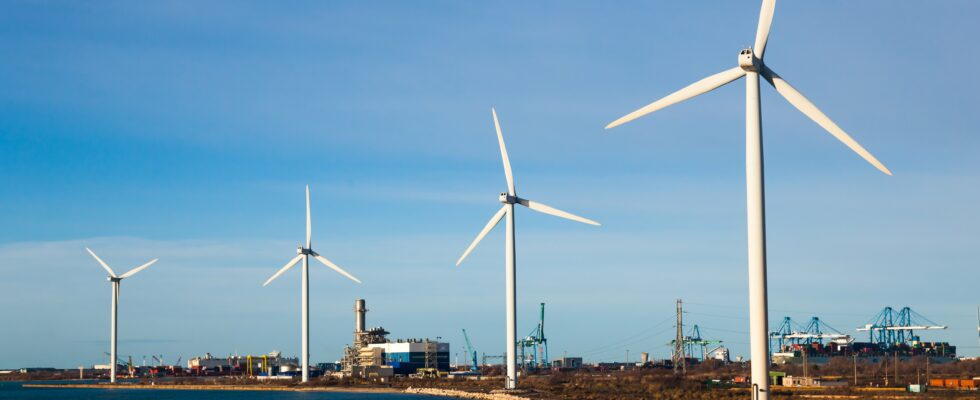This is a decade, France undertook to reach carbon neutrality by 2050. Starting with that of the industries which must drastically lower their greenhouse gas emissions (GHG). Transports, energy, construction, industrial sites like the Fos-sur-Mer basin: largely helped by the State, all the major sectors of the economy have embarked on the battle and the front walk seems irreversible in Our country. A voluntarism that contrasts with what is observed abroad. In the United States, Donald Trump has returned to the White House and leaves the Paris Accords. In China, GHG emissions are getting on the rise. Even the European Union is preparing to lighten your green pactyet adopted in 2019. Suffice to say that the general movement slows down and worried.
Their factory has no customer yet but its construction is almost acted. Carried by Elyse Energy, Neocarb, will offer Fos-sur-Mer (Bouches-du-Rhône) its first sustainable fuel production platform. “This tool will contribute to locally decarboning maritime and aeronautical transport, explains Jérôme Giraud, a delegate territorial director of the young company, specialist in low-carbon molecules. It is a substantive trend that takes our confidence.” And not only theirs since Elyse Energy has just raised 120 million euros to refine her project.
The project (1.5 billion euros) is ambitious: it provides for the establishment of a powerful electrolysis capable of producing 40,000 tonnes of hydrogen per year. This primary mixed with carbon drawn from the territory industries will be used to manufacture around 200,000 tonnes of e-methanol. A part will cover the local needs of a dozen ferries for the maneuvers of entrances and exits of ports. The rest will be refined in order to produce synthetic aviation fuel. “Enough to meet the local needs forced by the regulations by 2030,” calculated the company.
Divide the GHG emissions in ten years
Neocarb appears to be the last investment announcement to come in one of the country’s largest industrial zones (10,000 hectares, more than 40,000 jobs), but it is not the only one. Winner, with Dunkirk, of the call for projects “Low carbon industrial zones” launched by France 2030, Fos-sur-Mer aims to divide its greenhouse gas emissions in the next ten years. With, during this period, no less than 15 billion euros in green commitments. ArcelorMittal gave the LA of this long -term race after being condemned at the end of 2018, for “endangering the life of others” due to the presence of dangerous dust in the installation.
The steelmaker, who alone represents 21 % of industrial carbon dioxide (CO2) industrial emissions, has planned to spend 1.7 billion euros in France to reduce his discharges by a third by 2030. In Fos-sur-Mer, its “green steel” plan is accompanied by the commissioning since last September with a new oven to substitute primary iron ore with recycled steel with a 10 % reduction objective CO2 emissions in 2025. “This site will be completed by the establishment of an electric arc oven allowing the merger of steel from the recycling sectors”, explains the director of the site, Bruno Ribo.
Other manufacturers follow suit. The Gravithy consortium, carried by the Dutch investment company Eit Innovanergy, is one of the most promising. For an amount of 2.2 billion euros, it projects the construction in FOS of the first French production factory by low carbon metallic iron hydrogen, a semi-finished product in the form of briquettes intended for the greening of the stewers. “The installation will avoid double CO2 emissions each year,” according to its president José Noldin.
An area that concentrates a third of the most polluting activities in France
There is an emergency. Renamed “fossuer” by many inhabitants, Fos-sur-Mer is the subject of many health alerts. No less than 400 industrial installations operate on this area which concentrates a third of the most polluting activities in France with record emissions of 20 million tonnes of CO2 per year. Among them, 58 are classified Seveso, 39 of which have a “major industrial risk” for the environment, according to the referencing of the Regional Directorate of the Environment, Development and PACA housing.
With dramatic medical consequences: 63 % of the region’s population is the victim of at least one chronic disease such as respiratory Allergies, autoimmune or endocrine diseases, cardiovascular damage … against 36.6 % in the rest of the country.
.
